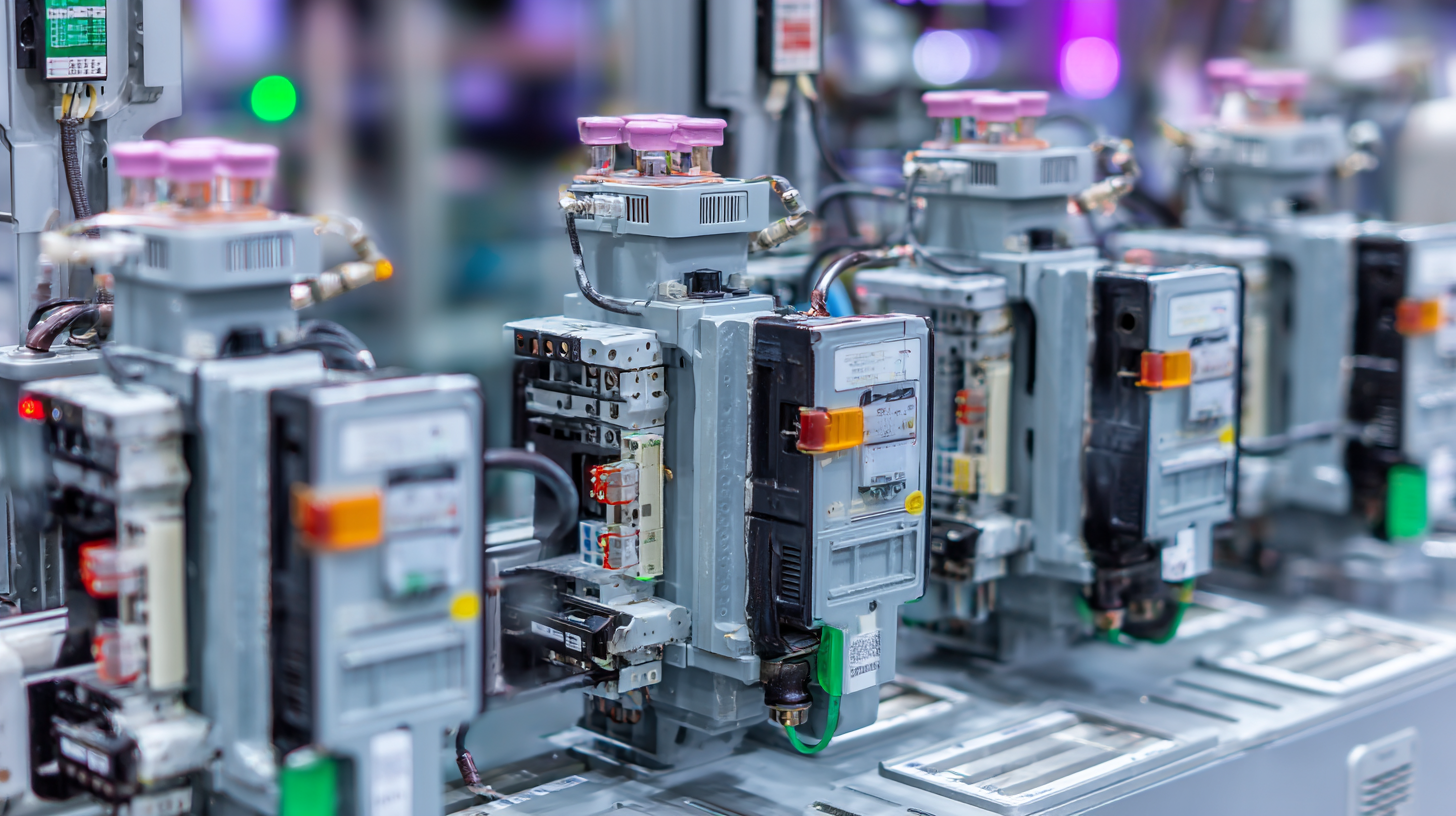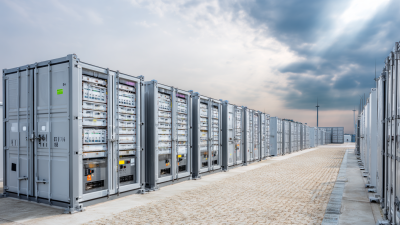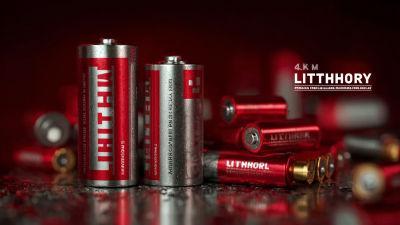Exploring the Future of Energy: The Role of Vacuum Circuit Breakers in Smart Grids
The evolution of energy infrastructure is poised to play a critical role in the transition towards more sustainable and efficient power systems. As smart grids become increasingly integral to modern energy management, technologies like the Vacuum Circuit Breaker (VCB) are gaining prominence.
 According to a report by MarketsandMarkets, the global smart grid market is expected to reach $61.3 billion by 2026, growing at a compound annual growth rate (CAGR) of 20.1% from 2021. VCBs offer enhanced performance, reliability, and safety in electrical distribution, aligning well with the smart grid's requirements for rapid fault interruption and reduced maintenance costs. Their capability to operate effectively in various environmental conditions further underscores their significance in the evolving energy landscape.
According to a report by MarketsandMarkets, the global smart grid market is expected to reach $61.3 billion by 2026, growing at a compound annual growth rate (CAGR) of 20.1% from 2021. VCBs offer enhanced performance, reliability, and safety in electrical distribution, aligning well with the smart grid's requirements for rapid fault interruption and reduced maintenance costs. Their capability to operate effectively in various environmental conditions further underscores their significance in the evolving energy landscape.
As the demand for renewable energy integration and digitalization of grid management systems increases, exploring the future of energy will undoubtedly highlight the indispensable role of Vacuum Circuit Breakers in supporting resilient and intelligent grid operations.
The Evolution of Vacuum Circuit Breakers in Smart Grid Infrastructure
The evolution of vacuum circuit breakers (VCBs) has been pivotal in the development of smart grid infrastructure. Traditionally, circuit breakers relied on air or oil for interruption capabilities, leading to challenges such as maintenance and environmental concerns. In contrast, VCBs utilize a vacuum as the medium for interruption, allowing for rapid response times, lower maintenance requirements, and a reduced environmental footprint. This transition reflects the shifts in energy demands and the increasing need for reliable, efficient electrical systems.

As smart grids become more integrated with renewable energy sources and advanced technologies, VCBs play a crucial role in enhancing grid reliability and stability. Their compact design and ability to handle high voltage make them ideal for urban environments where space is at a premium. Furthermore, VCBs are equipped with advanced monitoring and communication capabilities, facilitating real-time data exchange and decision-making processes. This integration not only improves operational efficiency but also brings forth enhanced safety standards, thereby supporting the overall goal of a smarter, more resilient energy system.
Understanding the Necessity of Vacuum Circuit Breakers for Energy Efficiency
Vacuum circuit breakers (VCBs) play a crucial role in enhancing energy efficiency within modern smart grids. As the demand for reliable and efficient energy systems continues to grow, VCBs emerge as essential components due to their ability to interrupt electrical currents swiftly and effectively. Unlike traditional circuit breakers, VCBs utilize a vacuum to contain the arc produced during current interruption, minimizing energy losses and ensuring a more stable power supply. This technology not only improves the overall performance of the grid but also significantly reduces maintenance costs associated with more conventional equipment.
The integration of VCBs into smart grids also supports the ongoing transition toward renewable energy sources. By providing rapid switching capabilities and high reliability, VCBs facilitate the integration of intermittent energy sources such as wind and solar. Their compact design and enhanced operational efficiency allow for better energy distribution and management. Furthermore, as smart grids continue to evolve with advanced monitoring and control technologies, the role of VCBs in maintaining energy efficiency and enhancing grid resilience becomes even more critical, paving the way for a sustainable energy future.
Impact of Advanced Technologies on Vacuum Circuit Breaker Performance Metrics
The integration of advanced technologies into vacuum circuit breakers (VCBs) is significantly enhancing their performance metrics, making them pivotal components in the evolution of smart grids. According to a report by MarketsandMarkets, the global smart grid market is expected to grow from $400 billion in 2020 to $820 billion by 2025, with technologies like VCBs playing a crucial role in ensuring reliability and efficiency. The adoption of digital sensors and IoT devices in VCB systems allows for real-time monitoring and predictive maintenance, reducing downtime and operational costs.

Furthermore, advancements in materials science have led to the development of next-generation VCBs that exhibit superior thermal performance and arc-quenching capabilities. A report from ResearchAndMarkets highlights that these innovations are expected to improve the fault interruption rate by up to 30%, enhancing grid stability amidst the growing demand for clean and renewable energy. As smart grids evolve, the synergy between advanced technologies and vacuum circuit breakers will be instrumental in achieving efficient energy distribution and management, ensuring a sustainable energy future.
Forecasting Market Trends: The Role of Vacuum Circuit Breakers in Renewable Integration
The global push towards renewable energy integration has reshaped the landscape of power distribution, creating an urgent need for advanced technologies like vacuum circuit breakers (VCBs). As outlined in the recent "Global Smart Grid Market Report," the smart grid sector is projected to reach $61 billion by 2026, driven in large part by the rise of renewable energy sources such as wind and solar. VCBs play a pivotal role in this transition, offering reliable protection and efficient management of high voltages linked to renewable assets. Their ability to handle frequent on/off switching in variable energy generation scenarios makes them indispensable for utility companies.
Tips: When considering the integration of VCBs in your energy infrastructure, focus on their maintenance-free benefits and minimal space requirements. Additionally, ensure that your team stays updated on the latest technological advancements to maximize operational efficiency.
Furthermore, the continuous evolution of VCB technologies is expected to align with the growth in distributed energy resources (DERs). According to a report by Markets and Markets, the VCB market is forecasted to grow at a CAGR of 5.2% from 2023 to 2028, emphasizing their increasing significance in energy management systems. As utilities navigate the complexities of integrating more renewables, VCBs emerge as not just a protective mechanism but as a cornerstone of modern grid architecture, supporting stability and sustainability in the energy sector.
Tips: Investing in advanced training for your operations team on VCB technologies can drastically improve response times and system resilience.
Exploring the Future of Energy: The Role of Vacuum Circuit Breakers in Smart Grids
| Year | Market Size (Million USD) | Growth Rate (%) | Applications | Key Drivers |
|---|---|---|---|---|
| 2023 | 350 | 5.2 | Renewable Integration, Industrial Applications | Renewable Energy Growth, Infrastructure Development |
| 2024 | 370 | 5.7 | Smart Grids, Electric Vehicles | Smart City Initiatives, EV Adoption |
| 2025 | 385 | 4.0 | Renewable Energy Plants, Hybrid Systems | Technological Advancements, Regulatory Support |
| 2026 | 402 | 4.4 | Grid Modernization, Load Management | Increased Energy Demand, Climate Change Mitigation |
| 2027 | 420 | 4.5 | Microgrids, Energy Storage Solutions | Decentralization of Energy Production, Energy Independence |
Challenges and Solutions for Implementing Vacuum Circuit Breakers in Smart Grids
The integration of vacuum circuit breakers (VCBs) in smart grids presents both significant challenges and innovative solutions. One of the primary challenges is the compatibility of VCBs with existing infrastructure. As many power systems were not designed with smart grid technology in mind, retrofitting may be necessary to ensure seamless operation. This often requires extensive upgrades to electrical systems, which can be both costly and time-consuming. Additionally, the training of personnel to manage new technologies presents a hurdle, as workers must be equipped with the skills to operate and maintain advanced VCB systems.
To address these challenges, utility companies can adopt a phased implementation approach. This strategy allows for gradual integration of VCBs, reducing the burden on existing infrastructure while facilitating smoother transitions. Furthermore, developing robust training programs and resources can enhance the workforce's adaptability to new technologies. Collaborations between manufacturers and utilities can also foster innovation, leading to the design of more compatible VCBs that meet the specific requirements of smart grids. These proactive measures can significantly mitigate the challenges faced during implementation, ultimately paving the way for more resilient and efficient energy systems.
Exploring the Future of Energy: The Role of Vacuum Circuit Breakers in Smart Grids
This chart illustrates the estimated adoption rates of vacuum circuit breakers (VCBs) within smart grids over the next decade, highlighting both challenges and potential solutions for their integration.
Related Posts
-

How to Ensure Import Export Certification for the Best Vacuum Circuit Breaker
-

5 Top Battery Storage Solutions Revolutionizing Energy Management in 2023
-

5 Practical Tips for Maximizing Energy Storage Battery Efficiency
-

Chinese Excellence in Manufacturing Best Lithium Ion Phosphate Battery for Global Markets
-

The Ultimate Guide to Maximizing Efficiency with Energy Storage Batteries: Key Trends and Innovations
-

How to Choose the Best Energy Storage Battery for Your Business Needs
